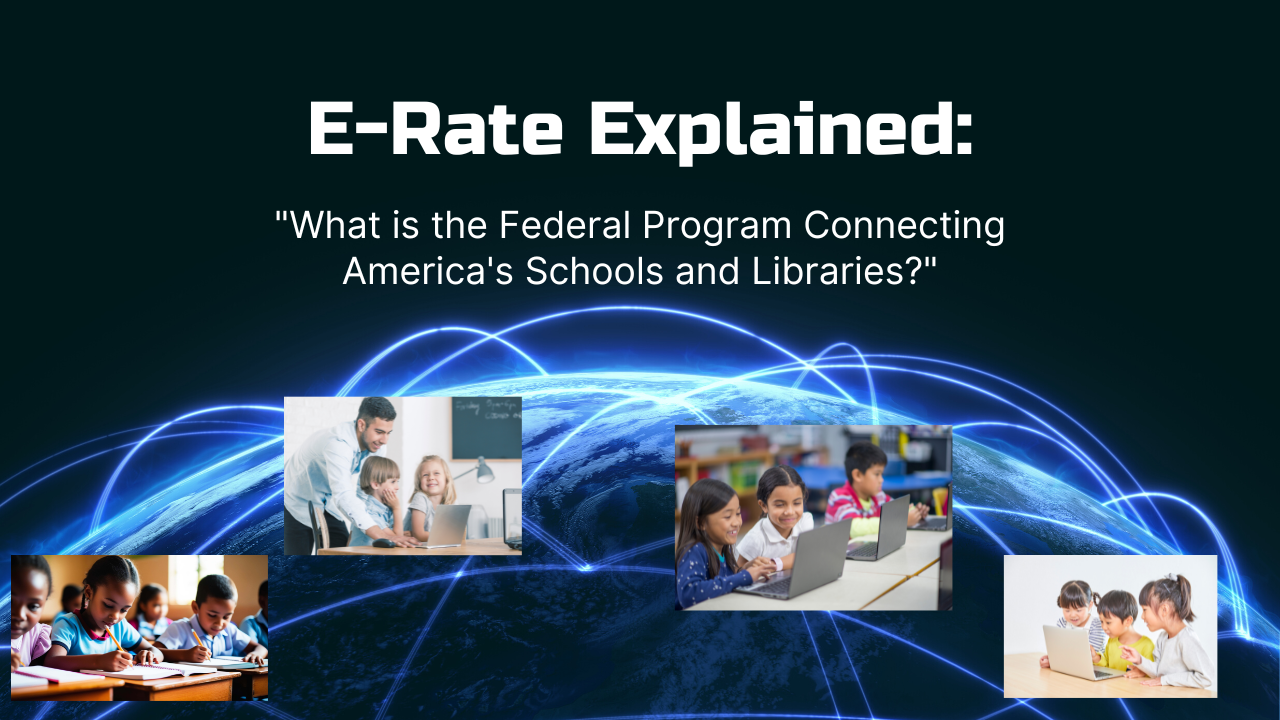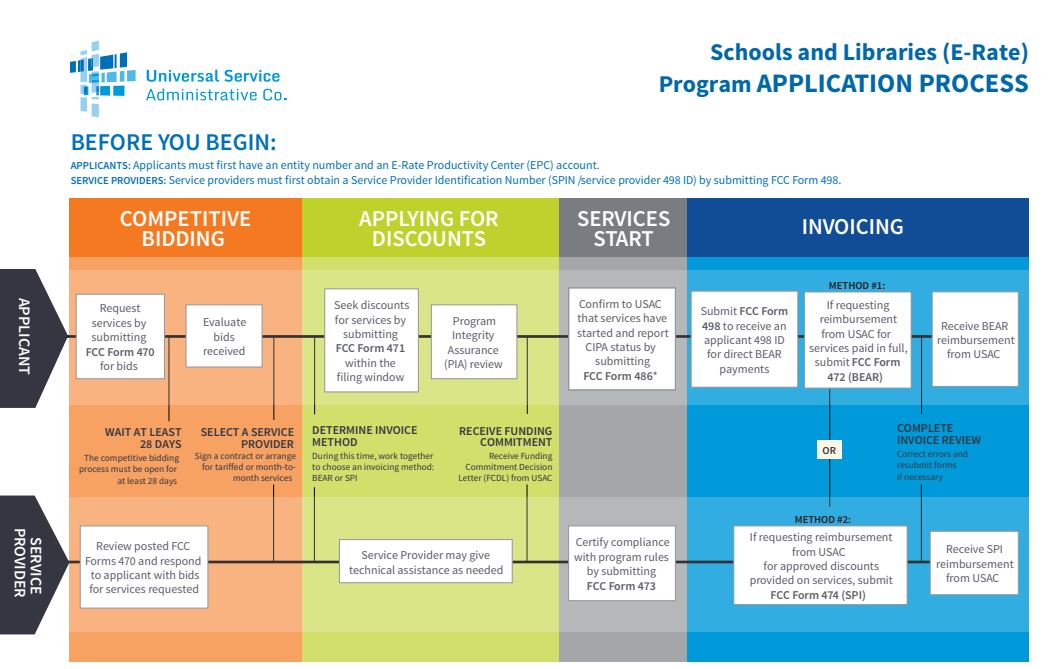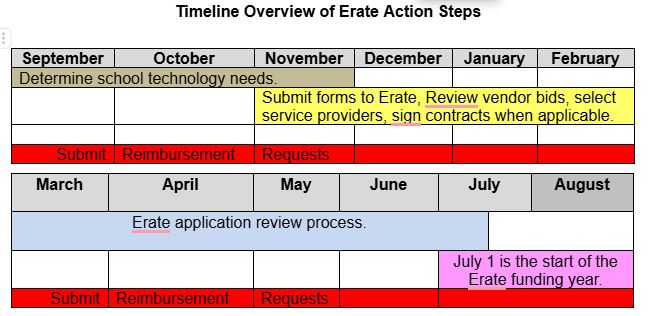E-Rate Explained: What is the Federal Program Connecting America's Schools and Libraries?
Oct 23, 2025
The arrival of pumpkin spice and jack-o'-lanterns signals the start of a new E-Rate Season at Grant Consulting Services LLC.
But what exactly is E-Rate?
Take a look at your next mobile or landline phone bill. You'll likely spot a line item called the Federal Universal Service Charge (or Universal Connectivity Charge). This surcharge is often tucked away under the general "taxes and surcharges" section. For most of us, this fine print and these small fees go unnoticed. Even fewer people know what these surcharges actually fund, yet like any extra tax, we pay them regardless.
In this case, the Universal Service Charge is a tax for a good cause. This surcharge/tax helps pay for a portion of the costs of high-speed Internet service and much-needed equipment to schools and libraries.
The E-Rate program, also known as the Schools and Libraries Program, is a federal initiative overseen by the Federal Communications Commission (FCC) that provides significant reimbursements (ranging from 20% to 90% of total costs) on Internet access and internal network equipment for eligible public and private K-12 schools and libraries. Funded by the Universal Service Fund, its primary purpose is to ensure that all eligible educational institutions can obtain affordable, high-speed broadband and internal connectivity necessary to bridge the digital divide and support modern digital learning environments. An important note is that the eligible equipment mentioned above does not include end-user equipment like laptops or Chromebooks. Funding is for internal infrastructure equipment, like switches and access points, that schools and libraries need to provide wireless Internet access seamlessly throughout their buildings. The program recently added Wi-Fi for buses and Wi-Fi hotspots, but these services were rescinded by the FCC this year.
Only 14 percent of the country's K-12 schools had internet access when the E-rate program launched. Just 14%! Because of the steady rise in demand for bandwidth in schools and libraries, the FCC refocused E-Rate from telephone services to broadband Internet, with a goal to significantly expand Wi-Fi access. More recently, a Cybersecurity Pilot Program was initiated to help protect America's schools and libraries from cyberattacks. These steps to modernize the program are helping E-Rate keep pace with the need for increased Internet access and security.
Benefits
With changing technology and the rise in online learning, schools and libraries must be able to access resources and information through the Internet without issue. Here are four reasons to apply for the E-rate program.
- Substantial Cost Savings — E-rate provides a major financial benefit, offering discounts on eligible internet services that range from 20 to 90 percent, based on a school's economic need. This considerable reduction in telecommunications expenses can free up funds to be reallocated to other vital areas of the school budget, such as new equipment, facilities, or teacher salaries.
- Enhanced School Internet Infrastructure —The funding addresses the need for a robust technological infrastructure. For schools currently struggling with limited internet capabilities, E-rate makes it possible to eliminate the need to "ration" services like live streaming, ensuring students and teachers have consistent, high-speed access to a broader range of educational content and activities.
- Critical Student Access— E-rate helps schools provide crucial internet access to students who may not have it at home, whether due to a family's financial limitations or a lack of service providers in rural areas. By offering a reliable connection, the school becomes a vital hub for students to access information and educational resources.
- Greater Use of Technology in Education — The program facilitates the integration of technology, which creates a host of educational advantages for both students and teachers. Technology makes connections and learning more flexible, supporting:
- Improved Progress Tracking: Online platforms simplify monitoring a student's progress, allowing for better insight and parent involvement.
- Wider Content Availability: Teachers can easily deliver content from a variety of sources, including cloud services and live lectures.
- Flexible Learning: Students gain access to 24/7 learning opportunities, enabling them to seek help or ask questions outside of regular school hours.
- Sustainable Practices: "Green" teaching is promoted by reducing the reliance on paper and physical textbooks.
Process
The E-rate Grant year currently runs from July 1 to June 30 each year. Much like college basketball, the Erate season generally starts in October and can last until mid-March. Check out our timeline below for a rough overview! There are multiple steps to take and forms with a bunch of numbers instead of names to submit. This dizzying process can feel like being lost in a corn maze. There are specific rules, regulations, and pitfalls to avoid. Per the USAC website (2023), applicants will navigate the process using the following seven steps:
- Needs Assessment
- Competitive Bidding
- Selecting a Service Provider
- Applying for Discounts
- Application Review and approval
- Starting Services
- Pay for discounted services - or - Pay for services and invoice USAC for reimbursement
Grant Consulting Services, LLC has over 20 years of experience in the E-rate process and has helped multiple schools across the nation receive millions of dollars for much-needed technology funding. Contact us today for a free consultation to discuss how we can help you maximize your technology dollars through the E-rate program.
Resources
E-Rate.(2023). Retrieved from https://www.usac.org/e-rate/.
https://www.fcc.gov/consumers/guides/universal-service-program-schools-and-libraries-e-rate



